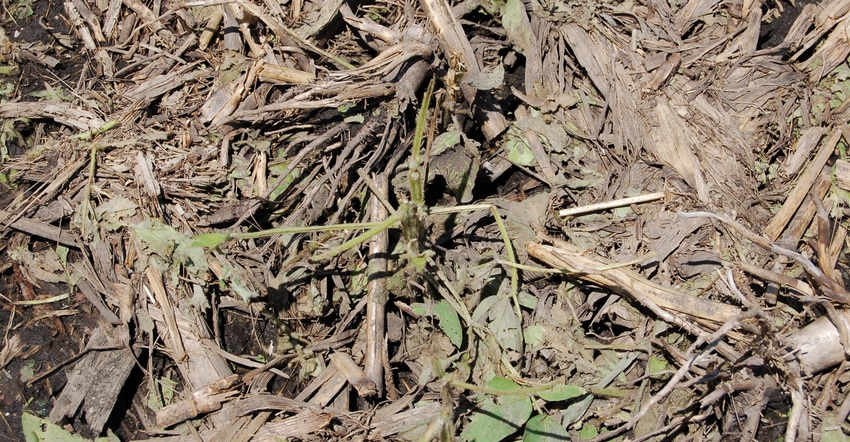
What do insurance adjusters look for when checking a field of soybeans after a hailstorm? One of the major factors is leaf loss. How much defoliation occurred, and what stage were plants in when the storm hit?
If you’ve ever walked into one of your fields with an insurance adjuster, you may have been surprised at how little yield loss they expected.
You can see information similar to what adjusters use in the Purdue University Corn & Soybean Field Guide. The chart "Estimated yield loss of indeterminate soybeans due to defoliation" is credited to National Crop Insurance Publication 6302. It’s similar to the information used to calculate potential yield loss in the new Soybean Field Scout app, available for iPhone and Android cellphones.
Corey Gerber, director of the Purdue Crop Diagnostic Training and Research Center, says 2017 editions of the printed Corn & Soybean Field Guide and the iPad version, plus new cellphone apps, are available. Find the new cellphone versions at the app store. There are two: Soybean Field Scout and Corn Field Scout. Each sells for $5.99.
Here’s a closer look at evaluating soybean defoliation from something like a hailstorm and potential yield loss using the Soybean Field Scout app.
• Wait a few days. The blanket recommendation from most agronomists is to wait a few days after a hailstorm to evaluate the condition of the field. Damage typically appears to be worst immediately after the storm. You can better assess how plants will regrow a few days later.
• Determine soybean growth stage. This becomes critical if plants are already in the reproductive stage. Soybeans are most sensitive to leaf loss when flowering, producing pods and filling pods. The impact of damage peaks at the R5 stage, when seeds are beginning to form in pods.
• Determine defoliation of entire plant. Tattered upper leaves with leaf tissue missing look bad, but the overall percentage of defoliation may not be as high as it appears. This is particularly true when Japanese beetles, a top feeder, feed on plants. Top leaves may show considerable damage, but if lower leaves aren’t affected, percent of defoliation of the entire plant may be much lower than you expect.
• Refer to cellphone calculator for yield loss estimate. If plants are in the R3 stage, which means pods are about a quarter inch long at one of the four uppermost nodes on the main stem with a fully developed leaf, and you estimate there is 50% defoliation of plants, potential yield loss is estimated at 8%. If you originally thought the field could make 60 bushels per acre, the new estimate would be closer to 55 bushels.
• Use calculator to check various scenarios. Suppose plants are at R3, but there is only 20% defoliation. That might be tattered leaves with a few holes. Plug in new numbers into the cellphone calculator. The new yield loss estimate is 3%.
• Take other damage into account. If hail caused defoliation, it may have also bruised or broken stems. Take other factors into account.
About the Author(s)
You May Also Like




